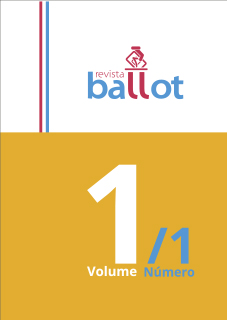Resumo
This article makes a comparative analysis of the caselaw between the Inter-American Court of Human Rights and the European Court of Human Rights to verify how questions of political representation are dealt with in multicultural contexts. For this purpose, I discuss the theoretical debate on political representation in multicultural societies, followed by analysis of the caselaw from the two Courts regarding the theme, focusing on cases involving political parties. Then I answer the following questions: Is the caselaw from the Inter-American Court of Human Rights and the European Court of Human Rights permeated by a multicultural vision of the law? Are there differences between the ways the two Courts deal with political representation in multicultural societies? Is it possible to classify the relevant judgments of the Courts according to some contemporary political philosophy? After responding to these questions, I present a comparative theoretical and jurisprudential discussion.
----------------
Este artigo fará uma análise comparativa entre a jurisprudência da Corte Interamericana de Direitos Humanos e a Corte Europeia de Direitos Humanos com o fim de verificar como questões de representação política são tratadas em contextos multiculturais. Para tanto, discutirei acerca do debate teórico sobre representação política em sociedades multiculturais e, em seguida, analisarei a jurisprudência das duas cortes sobre o tema, com o foco em casos que envolvam partidos políticos. Depois, responderei às seguintes perguntas: As jurisprudências da Corte Interamericana de Direitos Humanos e da Corte Europeia de Direitos Humanos são permeadas por uma visão multicultural do Direito? Há diferença entre a forma como as duas cortes lidam com a representação política em sociedades multiculturais? É possível classificar os julgamentos relevantes dessas duas cortes de acordo com alguma vertente da filosofia política contemporânea? Após responder a essas perguntas, discutirei comparativamente questões teóricas e jurisprudenciais.
Os Direitos Autorais dos trabalhos publicados na revista BALLOT continuam pertencendo aos seus autores, que autorizam, ao inscrever-se no processo de submissão, a divulgação do seu conteúdo nesta plataforma para o acesso livre pela internet, devendo sempre ser citada a fonte. Pessoas interessadas em reproduzir parcialmente os artigos desta revista (partes do texto que excedam a 500 palavras, tabelas e ilustrações) deverão ter permissão escrita do(s) autor (es).
A Revista Ballot obedece aos termos da licença Creative Commons 4.0 (http://creativecommons.org/licenses/by-nc-nd/4.0/), atribuição não comercial e sem derivações, em consonância com a legislação autoral brasileira, Lei 9.610/98.

Este trabalho está licenciado com uma Licença Creative Commons - Atribuição-NãoComercial-SemDerivações 4.0 Internacional.

